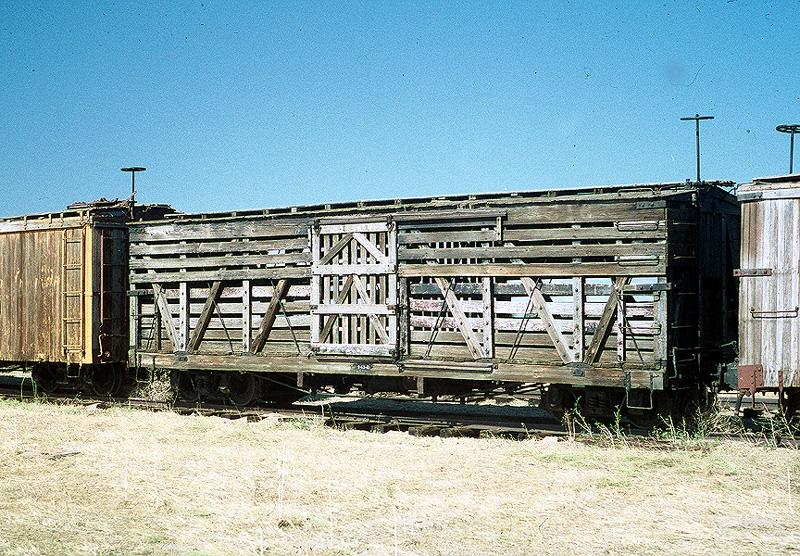
Stock car #5525, displayed in a rather decrepit condition at the South Park City Museum in Fairplay, Colorado.
The transport of livestock was never an important source of traffic for the Rio Grande, but nevertheless the railroad had several hundreds stock cars to deal with this seasonal traffic. These cars were equipped with openwork sides to allow the livestock to breathe. In fall, special trains were organized to transport living animals to slaughterhouses or to the places where livestock spent the winter, and in spring, stock trains were used again to bring back herds to the summer pastures in the high country. These trains were usually unit trains made only of stock cars and had high priority to get to their destination quickly, in order to provide the best possible transport conditions for their living cargo. Consequently they had ample motive power, sometimes up to four engines on the Marshall Pass line. Livestock was loaded and unloaded at special stock pens located along the railroad lines in the cattle-rearing areas.
The Rio Grande owned several classes of stock cars, the oldest dating back from 1873. In 1880, the stock car fleet consisted of several hundreds of cars, they were all scrapped before 1905. To replace them, in 1904-1905 the American Car & Foundry delivered to the Denver & Rio Grande 350 new stock cars (#5500 to 5849), 30ft long and with a capacity of 25 tons. These cars were designed to carry cattle and horses, some of the cars were equipped with two decks to carry smaller animals, such as sheep and hogs. Most of these cars remained on the active roster until the end of freight operations on the Denver & Rio Grande Western narrow gauge and were the main class of stock cars of the railroad, still very active until the mid fifties. They were rebuilt several times throughout their long life, in 1917, 1926 and 1945. After 1926, they were painted glossy black with white letterings, before that date their livery was oxide red. Some of these stock cars were converted into idler flat cars to be placed between gondolas carrying overhanging cargo (oil drilling pipes) in the fifties. Several dozens of these cars survive today, particularly: ten are on the Cumbres & Toltec Scenic Railroad, 8 were transfered to the Durango & Silverton Narrow Gauge Railroad and three are at the Colorado Railroad Museum. In 1923, one last class of 100 longer stock cars (#5900 to 5999) was built for the D&RGW. They were all scrapped in 1955-57 to salvage their Andrews trucks for use on flat cars.

Stock car 5510 has been modified for passenger use and then stripped back down. Photo by Dave Dye on July 2, 2000 in the Chama yard

Stock 5706 is coupled just ahead of short caboose 0579 on the 315 stock special. Photo by Dave Dye on July 4, 2008

This car appears to be a single deck car. The only single deck of B2-6 classification in the Helfin collection was the 5784. Photo by Randy Babcock on November 6, 2006.

This unidentified stock from the Helfin collection is now in Colorado Springs. Possible numbers for this car are 5543, 5551, 5643, 5644, 5677 or 5741. Photo by Robert Sanders, March 2006










